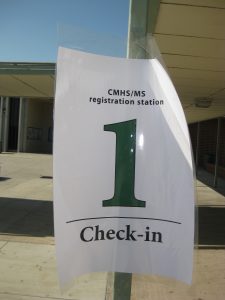Top 10 New (School) Year Resolutions for 2014
As a new school year starts, administrators and teachers are gearing up to implement lesson plans that will meet or exceed the year’s school resolution. Just as we make our own unwelcomed but necessary new year’s resolutions at the turn of the year, so does a school or district at the beginning of school. A resolution typically centered around some big initiative that is focused on whatever education problem plaguing the nation at the time. 
In some cases, it’s a new name for an existing problem that has already been tackled by a predecessor initiative. For example, 1:1 laptop initiatives have now become BYOD so that every child has access to a computer. Or “online learning???, changed to “blended learning???, transformed to “flipped classrooms.???
Nonetheless, every year there are a set of infinitives that keep administrators scrambling throughout the year to meet benchmarks and exceed targets so by the end the school year, they have maintained par and have a feeling of accomplishment.
So to properly kick-off your school year, here are 10 current initiatives (in no particular order) for the 2014-15 school year. And while there are an array of initiatives that focus on numerous topics, we made this list on a broad scale.
Take a look at the list and let us know what you think: Are there any initiatives we’re leaving out? How many of these initiatives has your school implemented?
- Common Core for 21st century learning to teach critical thinking and problem solving skills.
- STEM for global competitiveness.
- Adaptive Testing to better pinpoint a students learning level.
- Next Generation Science Standards (NGSS) to provide all students an internationally benchmarked science education.
- Flipped Learning where students gain first exposure to a topic outside of the classroom and use classroom time to assimilate the knowledge.
- Digital Literacy Skills so students understand how to take information from a computer and use it in multiple formats.
- Environmental Education to reduce environmental impact and costs and increase sustainability.
- Healthy Schools Programs to boost the nutritional value of meals served at school.
- Bring Your Own Device (BYOD) so learning experiences can be more personalized to the student.
- Race to the Top to spur innovation and reform in state and local K-12 districts.


 6. Provide good signage — Have adequate signage so parents know exactly where to go when they arrive. Have signs outside with a copy of the registration form pasted to it with instructions of where to go if they do not have the completed registration form.
6. Provide good signage — Have adequate signage so parents know exactly where to go when they arrive. Have signs outside with a copy of the registration form pasted to it with instructions of where to go if they do not have the completed registration form.
